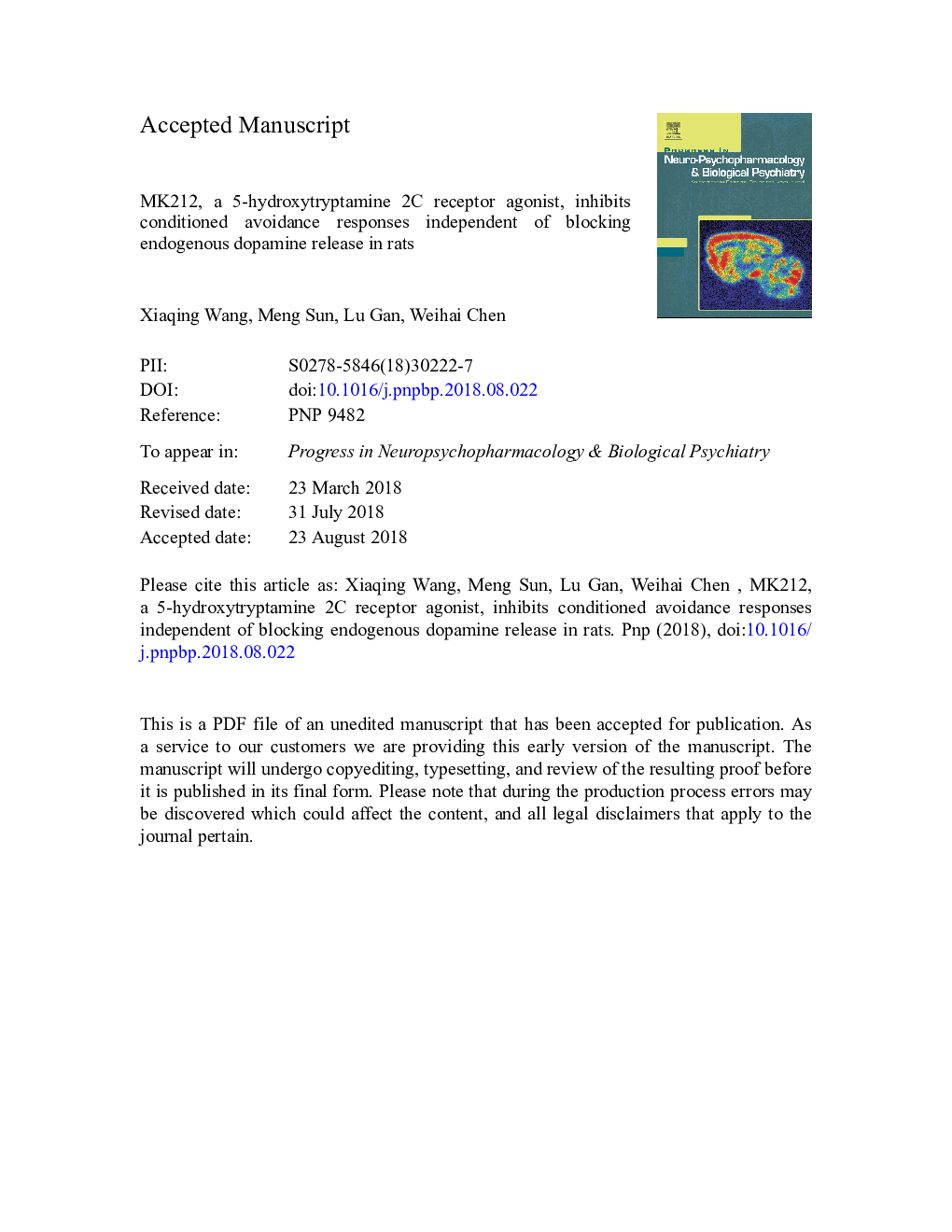| Article ID | Journal | Published Year | Pages | File Type |
|---|---|---|---|---|
| 8956563 | Progress in Neuro-Psychopharmacology and Biological Psychiatry | 2019 | 25 Pages |
Abstract
Although it is widely accepted that 5-hydroxytryptamine (5-HT) 2C receptor agonists produce antipsychotic effects by reducing endogenous dopamine release from presynaptic neurons, no direct evidence supports this. The aim of the present study was to investigate whether the antipsychotic effects induced by 5-HT2C receptor agonists are dependent on the inhibition of endogenous dopamine release. We developed a novel conditioned avoidance response paradigm to test this hypothesis. In this assay, rats in which dopamine was depleted by reserpine failed to show conditioned avoidance responses, and the acute administration of quinpirole reversed the disruption of avoidance responses induced by reserpine. This suggests that animals successfully showed conditioned avoidance responses independent of endogenous dopamine release under these experimental conditions. Our results revealed that MK212 (0.5â¯mg/kg) reduced avoidance responses triggered by quinpirole in dopamine-depleted rats. Therefore, 5-HT2C receptor agonists can inhibit conditioned avoidance responses independent of blocking endogenous dopamine release. Furthermore, the 5-HT2C receptor agonist, MK212, decreased the extracellular concentration of glutamate in the nucleus accumbens, indicating that this mechanism may be critical for the antipsychotic effects of 5-HT2C receptor agonists.
Keywords
Related Topics
Life Sciences
Neuroscience
Biological Psychiatry
Authors
Xiaqing Wang, Meng Sun, Lu Gan, Weihai Chen,
